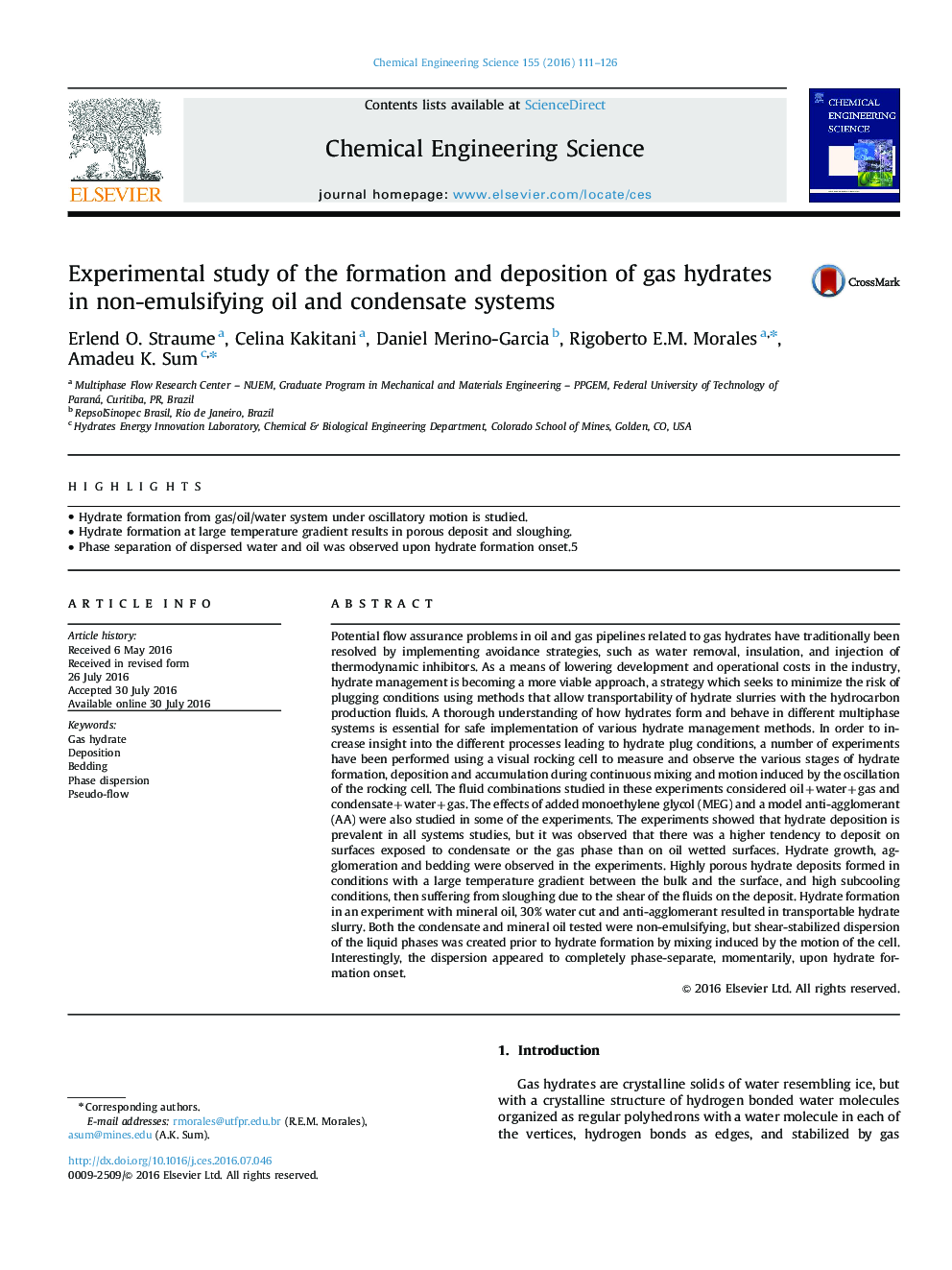| کد مقاله | کد نشریه | سال انتشار | مقاله انگلیسی | نسخه تمام متن |
|---|---|---|---|---|
| 4764013 | 1423264 | 2016 | 16 صفحه PDF | دانلود رایگان |
عنوان انگلیسی مقاله ISI
Experimental study of the formation and deposition of gas hydrates in non-emulsifying oil and condensate systems
ترجمه فارسی عنوان
بررسی تجربی از تشکیل و رسوب هیدراتهای گاز در سیستم های روغن غیر مایع و غیر مایع
دانلود مقاله + سفارش ترجمه
دانلود مقاله ISI انگلیسی
رایگان برای ایرانیان
کلمات کلیدی
هیدرات گاز، گواهی، ملافه پراکندگی فاز، شبه جریان
موضوعات مرتبط
مهندسی و علوم پایه
مهندسی شیمی
مهندسی شیمی (عمومی)
چکیده انگلیسی
Potential flow assurance problems in oil and gas pipelines related to gas hydrates have traditionally been resolved by implementing avoidance strategies, such as water removal, insulation, and injection of thermodynamic inhibitors. As a means of lowering development and operational costs in the industry, hydrate management is becoming a more viable approach, a strategy which seeks to minimize the risk of plugging conditions using methods that allow transportability of hydrate slurries with the hydrocarbon production fluids. A thorough understanding of how hydrates form and behave in different multiphase systems is essential for safe implementation of various hydrate management methods. In order to increase insight into the different processes leading to hydrate plug conditions, a number of experiments have been performed using a visual rocking cell to measure and observe the various stages of hydrate formation, deposition and accumulation during continuous mixing and motion induced by the oscillation of the rocking cell. The fluid combinations studied in these experiments considered oil+water+gas and condensate+water+gas. The effects of added monoethylene glycol (MEG) and a model anti-agglomerant (AA) were also studied in some of the experiments. The experiments showed that hydrate deposition is prevalent in all systems studies, but it was observed that there was a higher tendency to deposit on surfaces exposed to condensate or the gas phase than on oil wetted surfaces. Hydrate growth, agglomeration and bedding were observed in the experiments. Highly porous hydrate deposits formed in conditions with a large temperature gradient between the bulk and the surface, and high subcooling conditions, then suffering from sloughing due to the shear of the fluids on the deposit. Hydrate formation in an experiment with mineral oil, 30% water cut and anti-agglomerant resulted in transportable hydrate slurry. Both the condensate and mineral oil tested were non-emulsifying, but shear-stabilized dispersion of the liquid phases was created prior to hydrate formation by mixing induced by the motion of the cell. Interestingly, the dispersion appeared to completely phase-separate, momentarily, upon hydrate formation onset.
ناشر
Database: Elsevier - ScienceDirect (ساینس دایرکت)
Journal: Chemical Engineering Science - Volume 155, 22 November 2016, Pages 111-126
Journal: Chemical Engineering Science - Volume 155, 22 November 2016, Pages 111-126
نویسندگان
Erlend O. Straume, Celina Kakitani, Daniel Merino-Garcia, Rigoberto E.M. Morales, Amadeu K. Sum,
